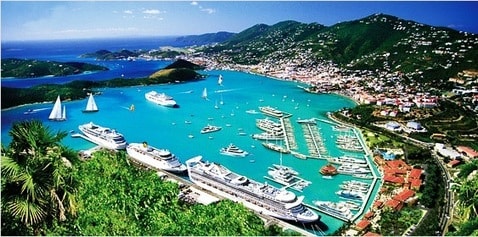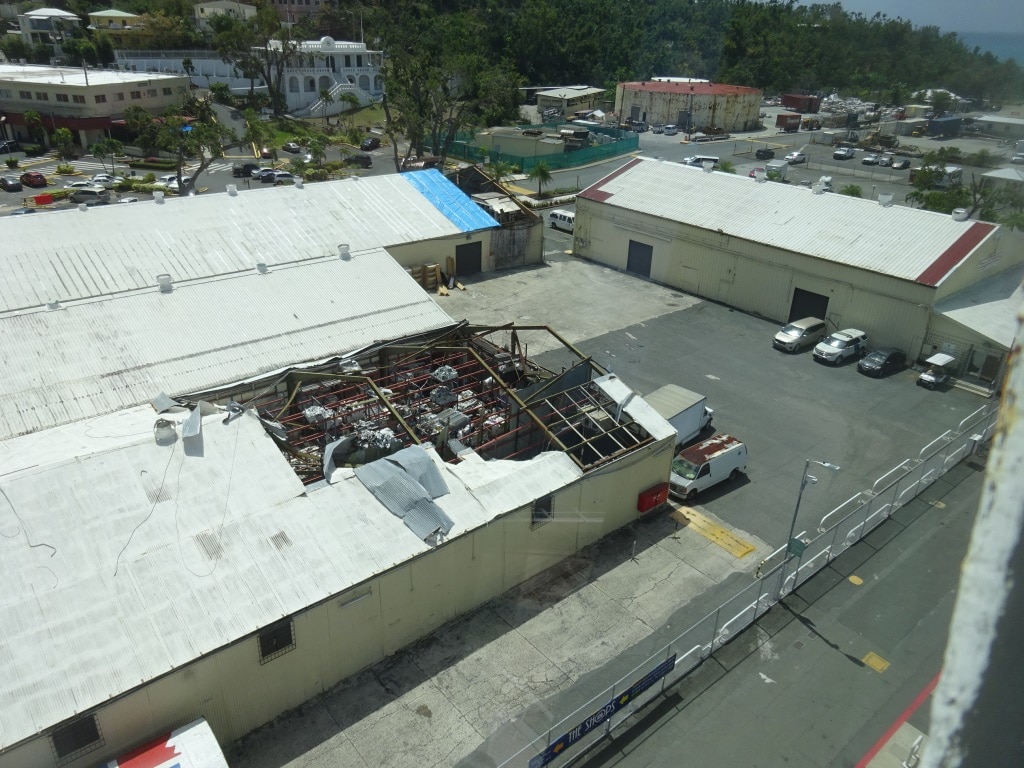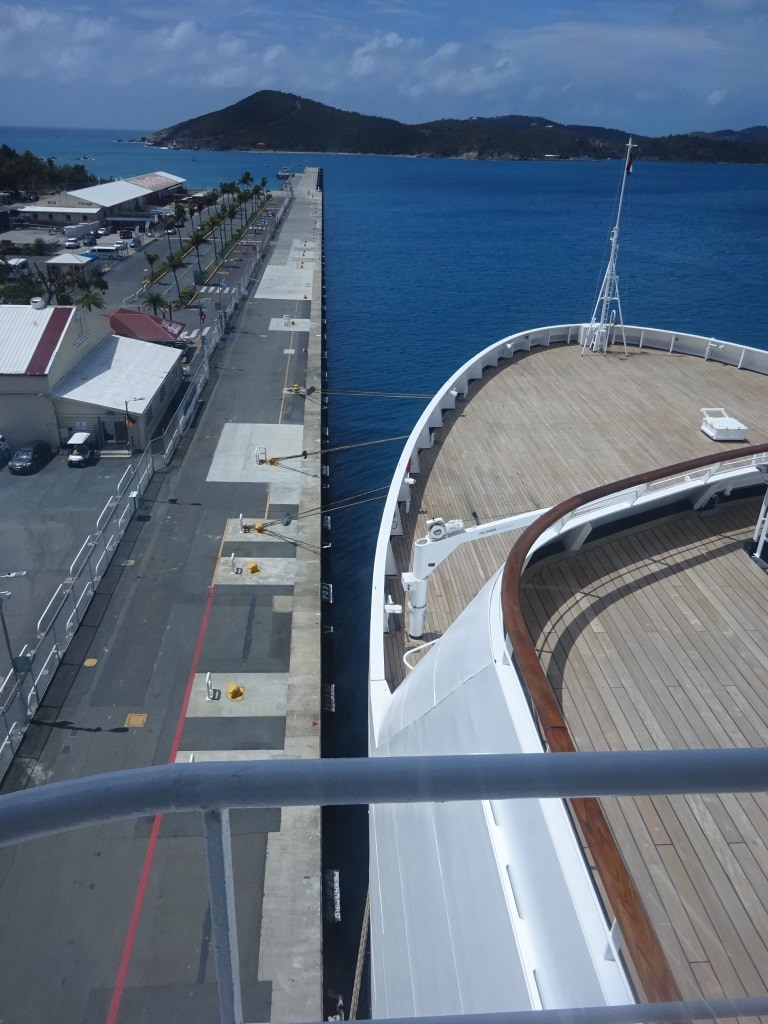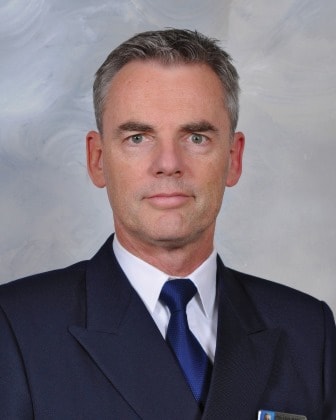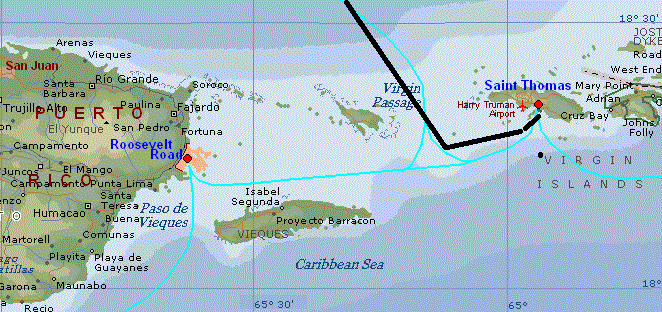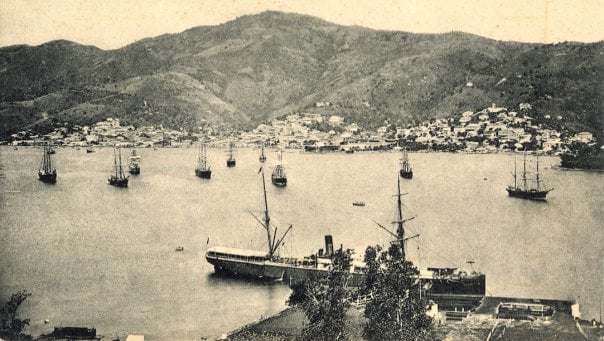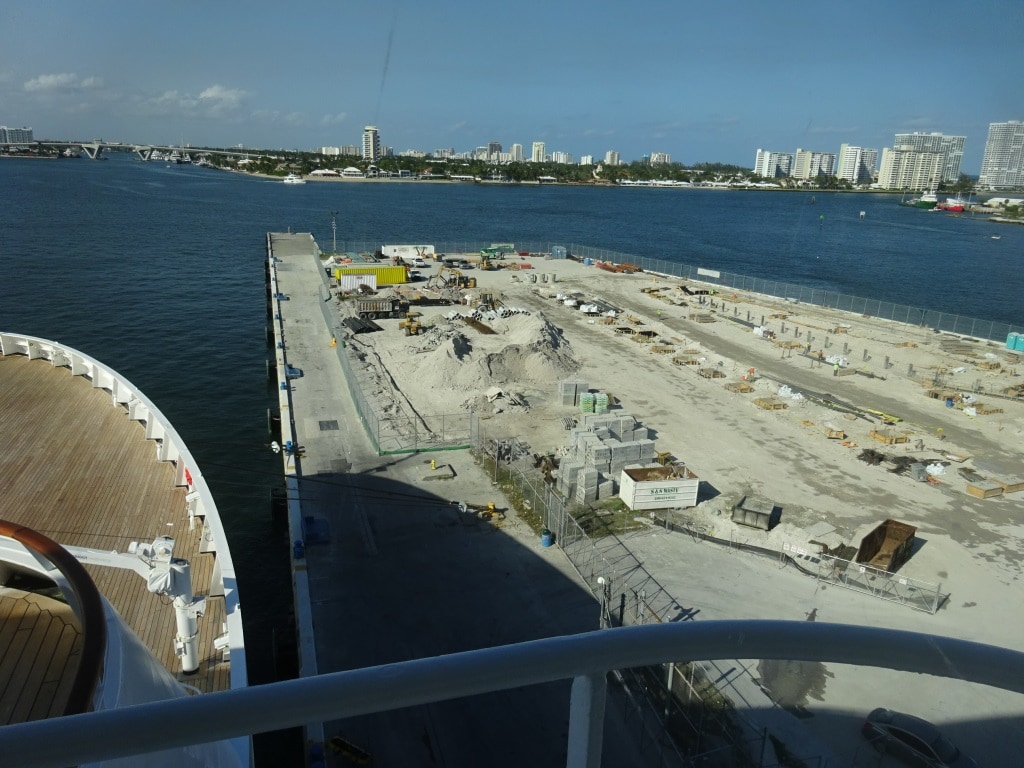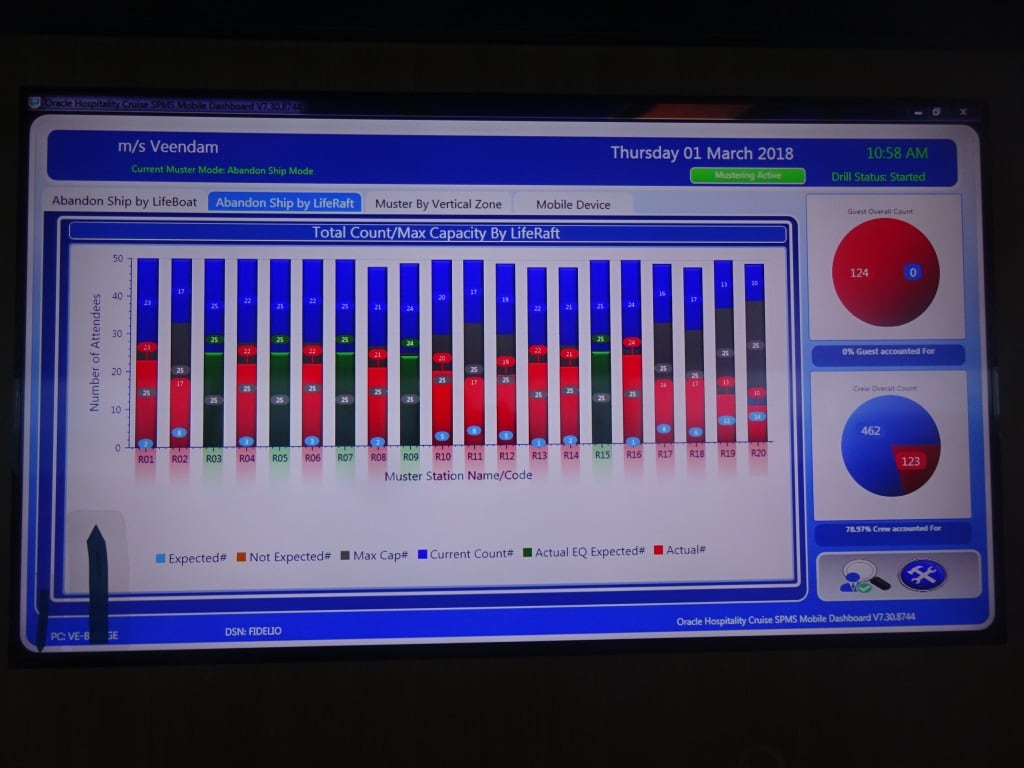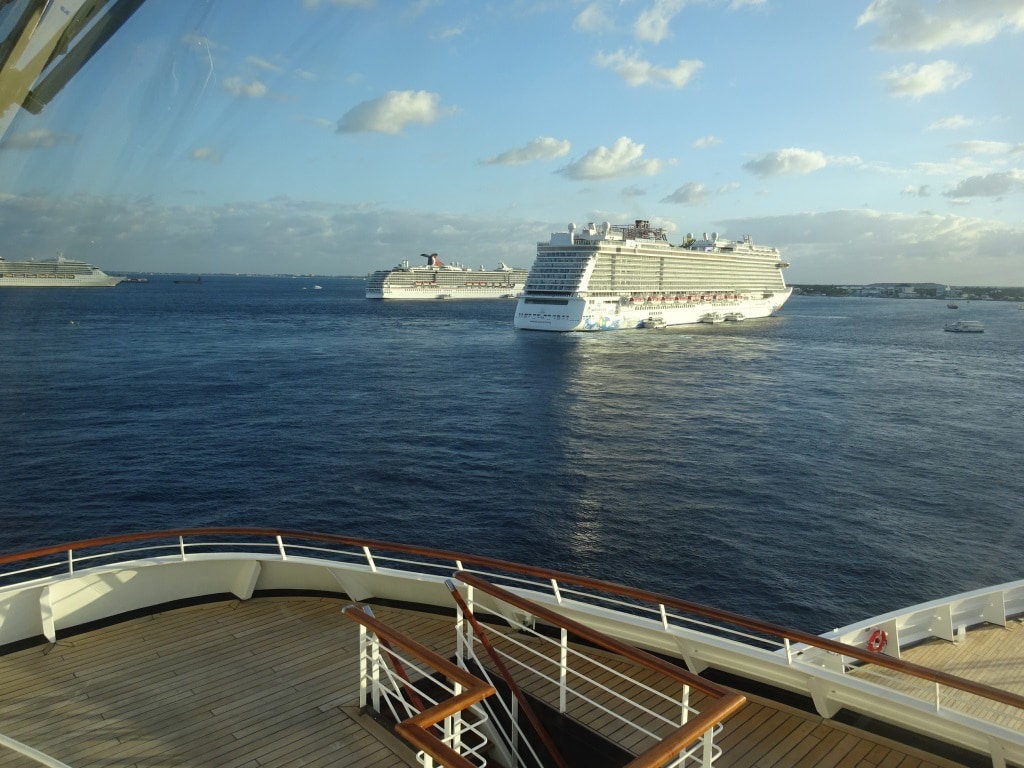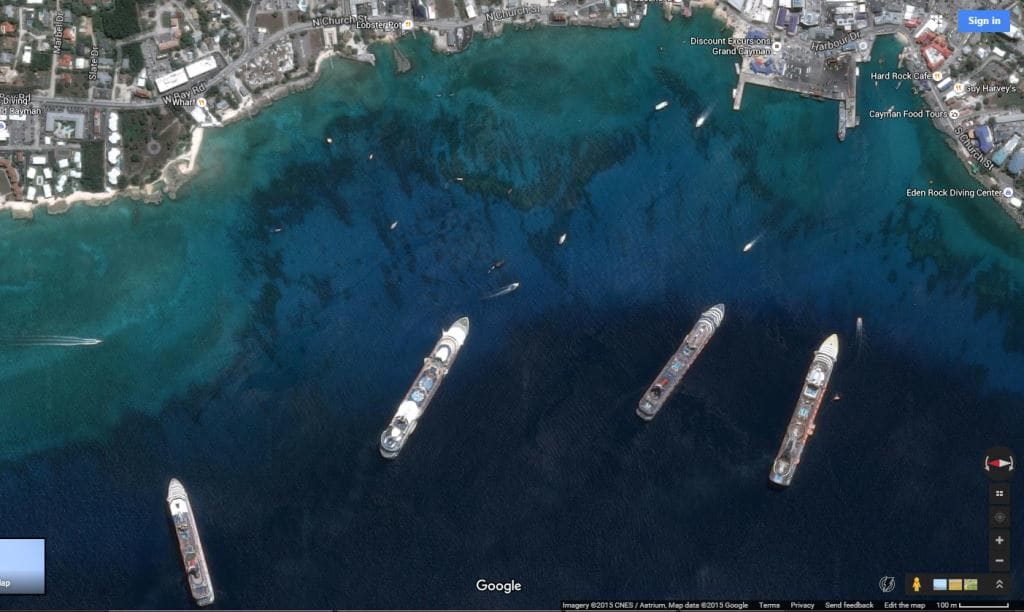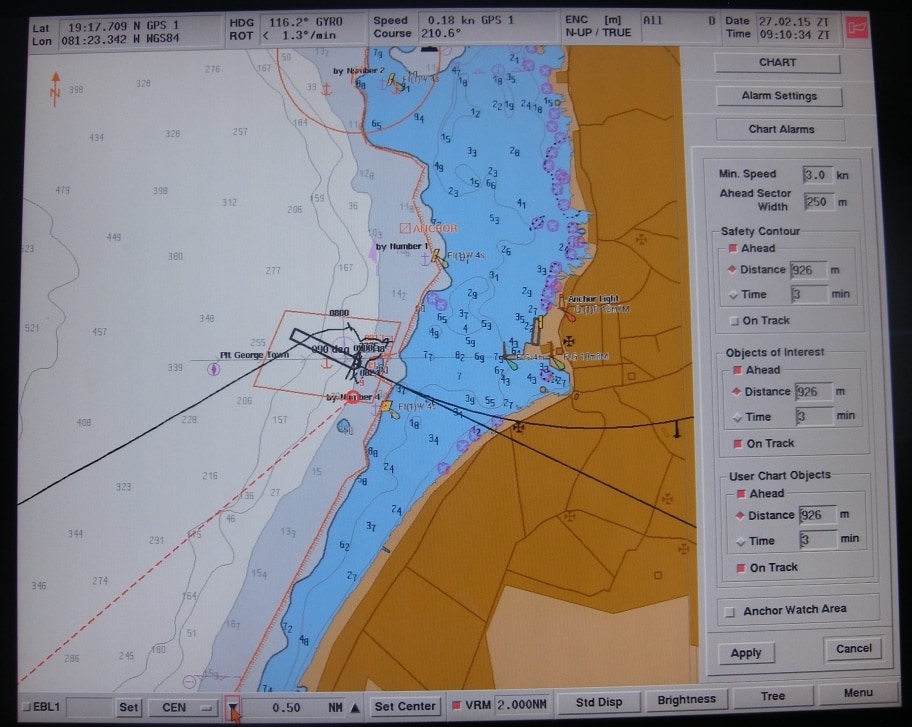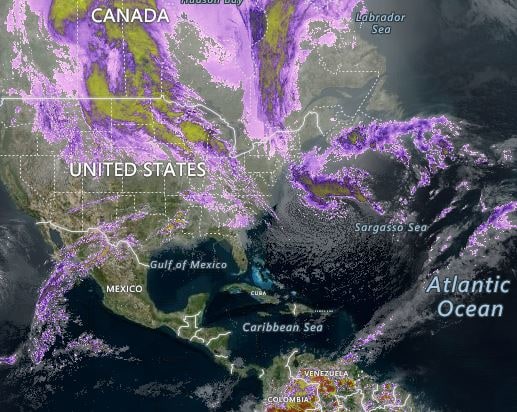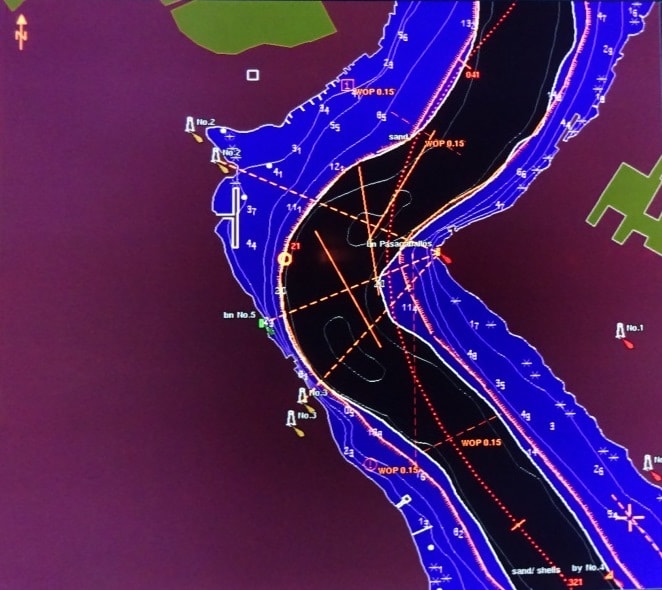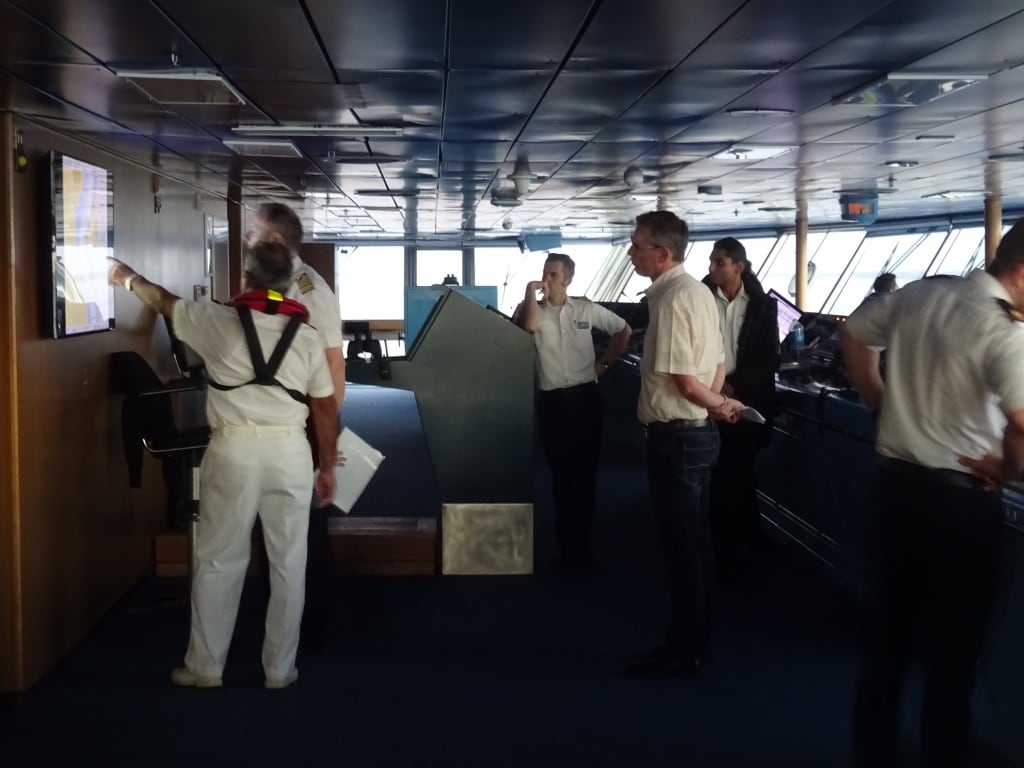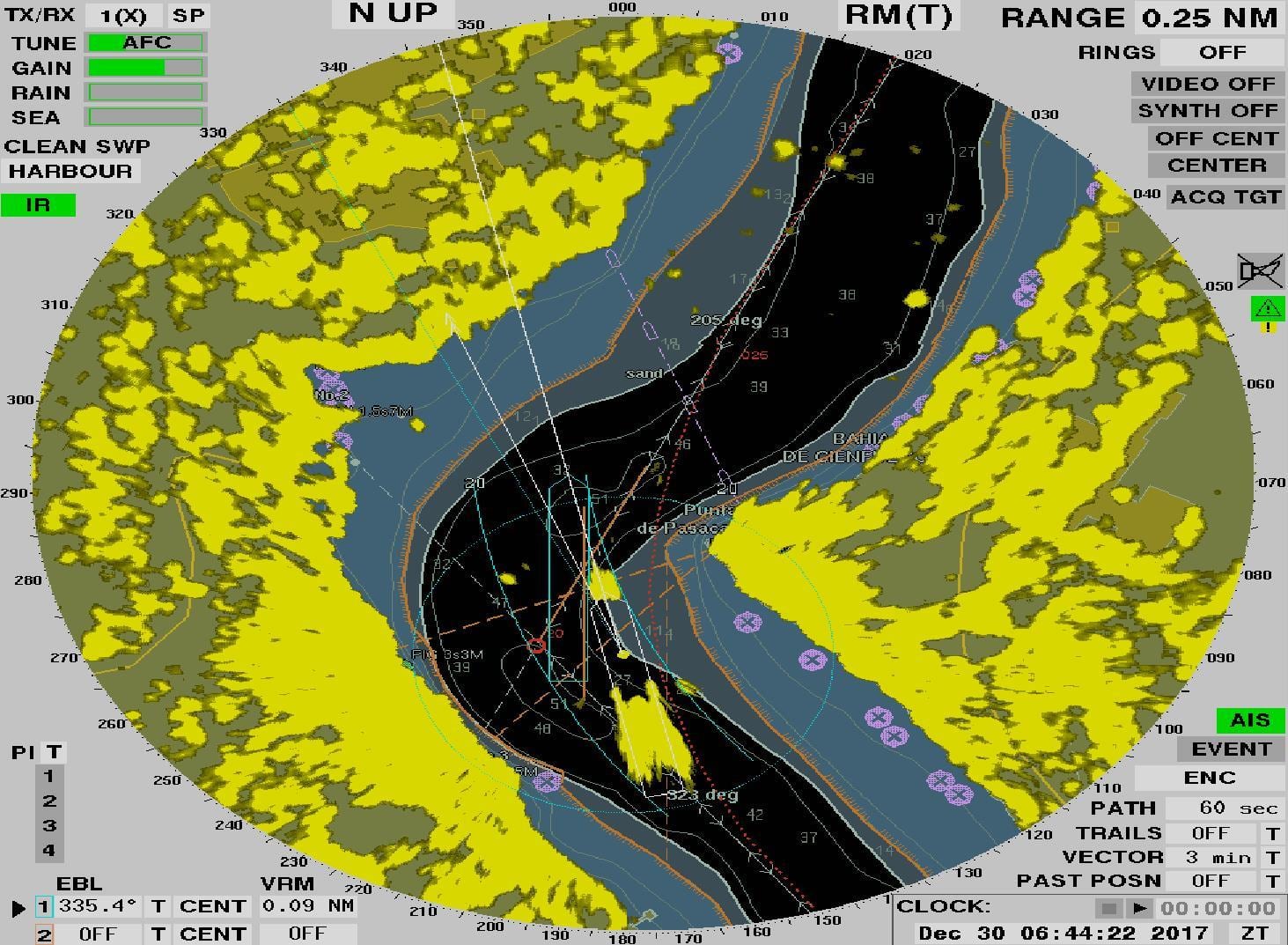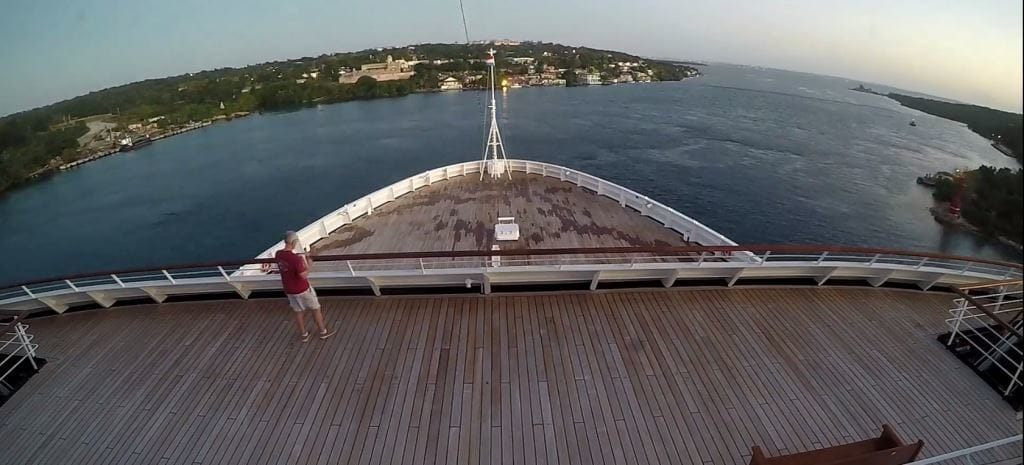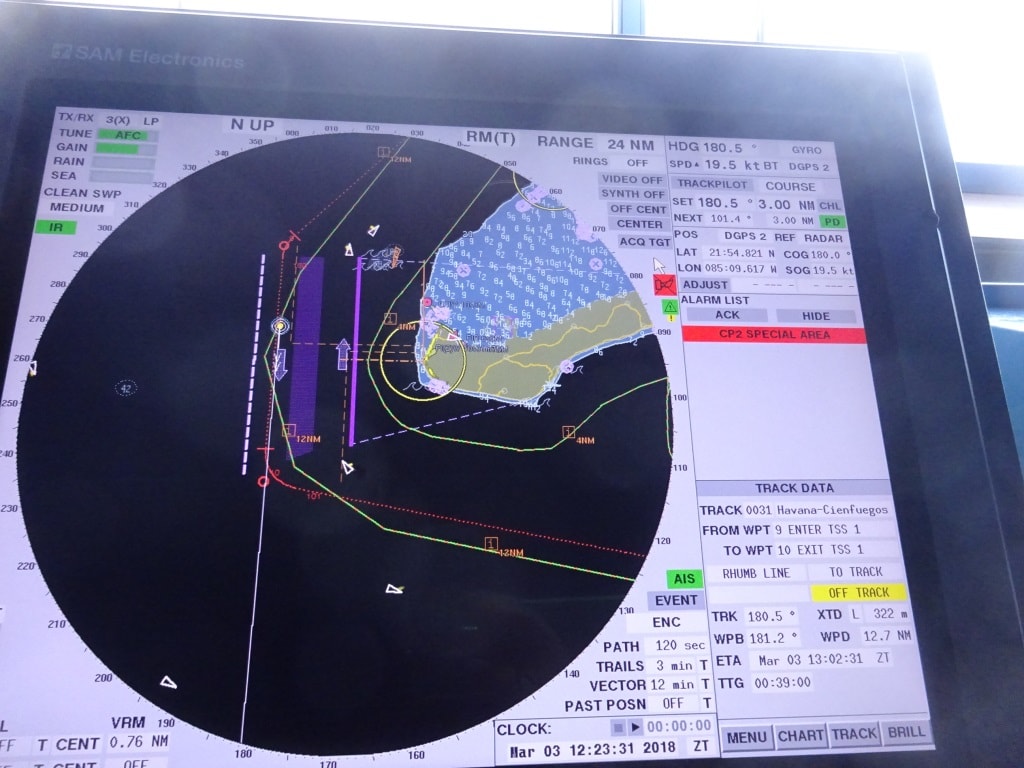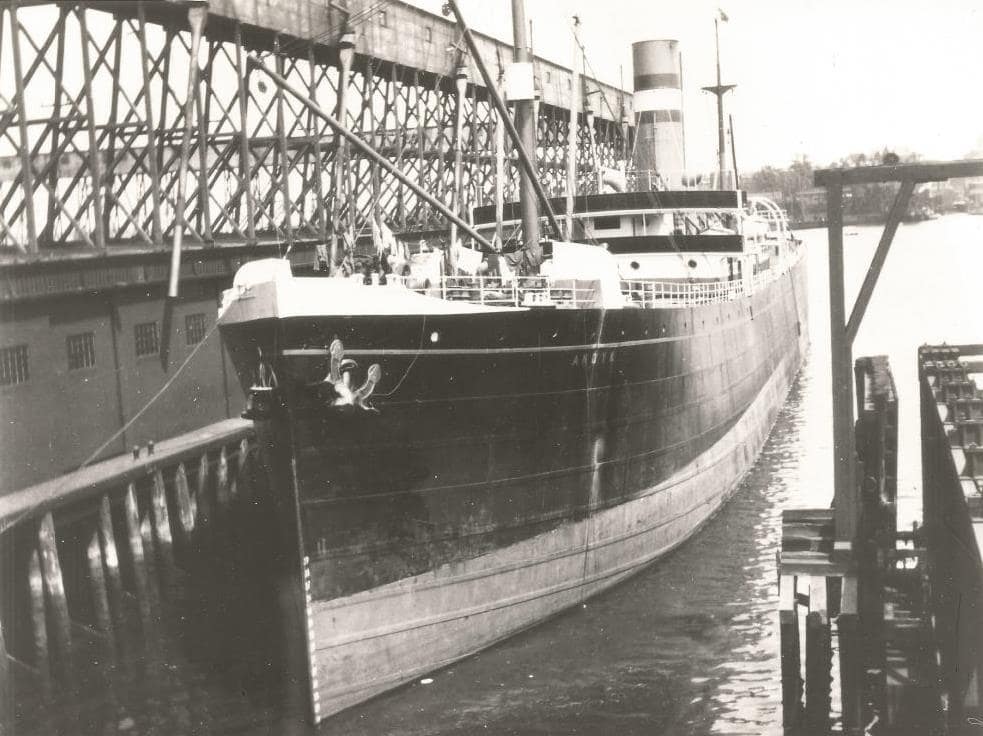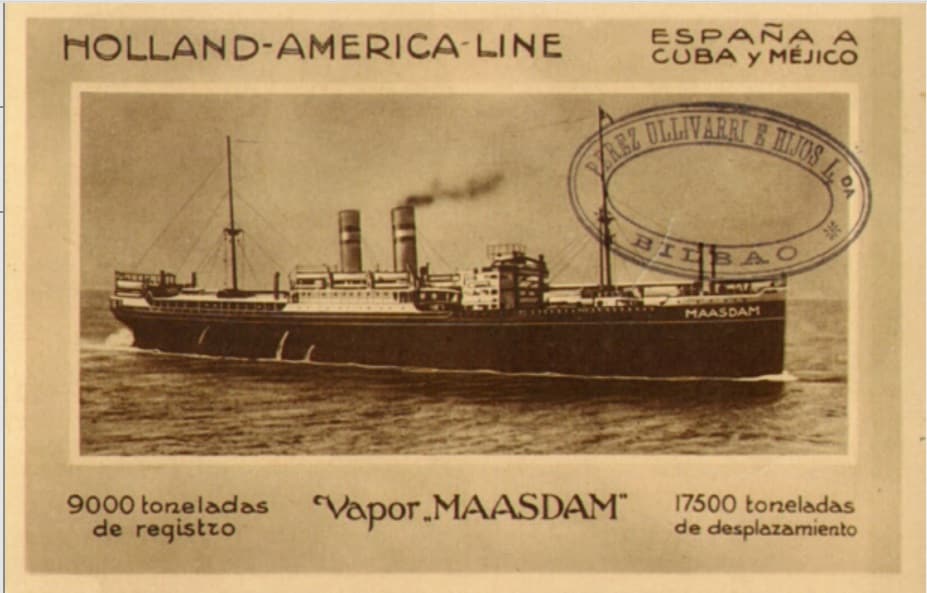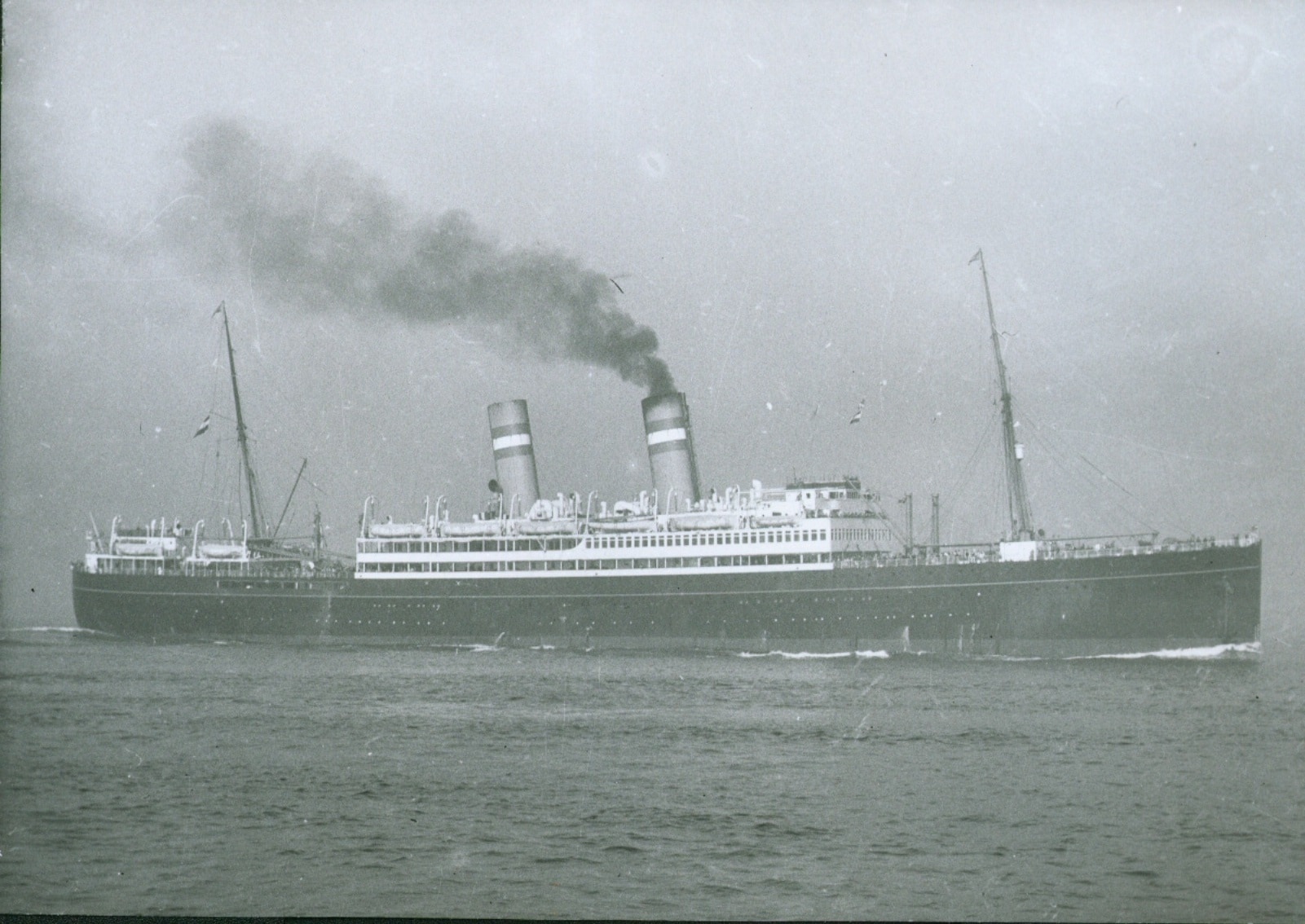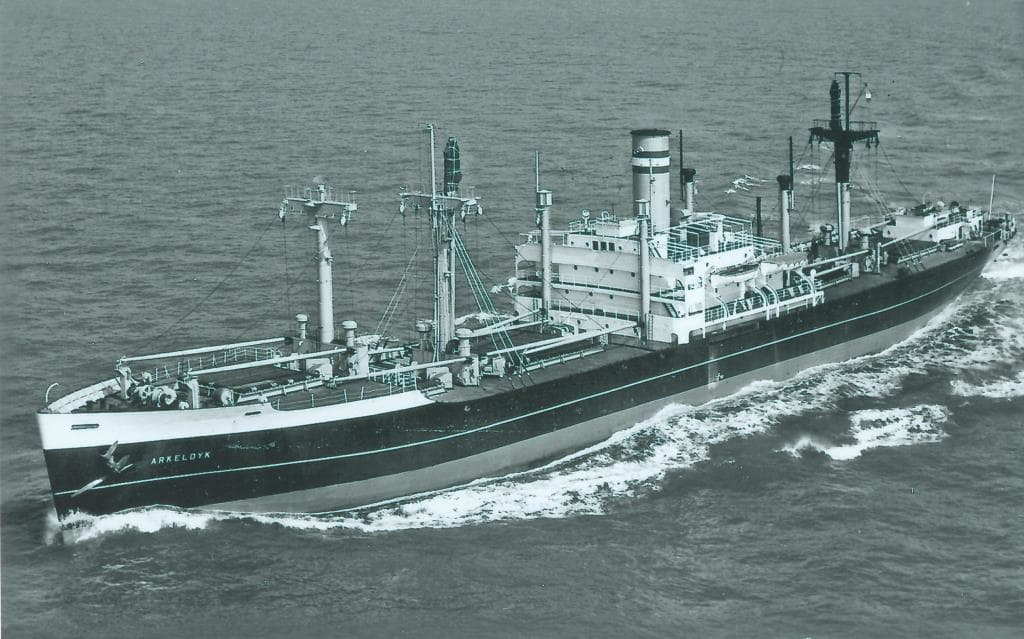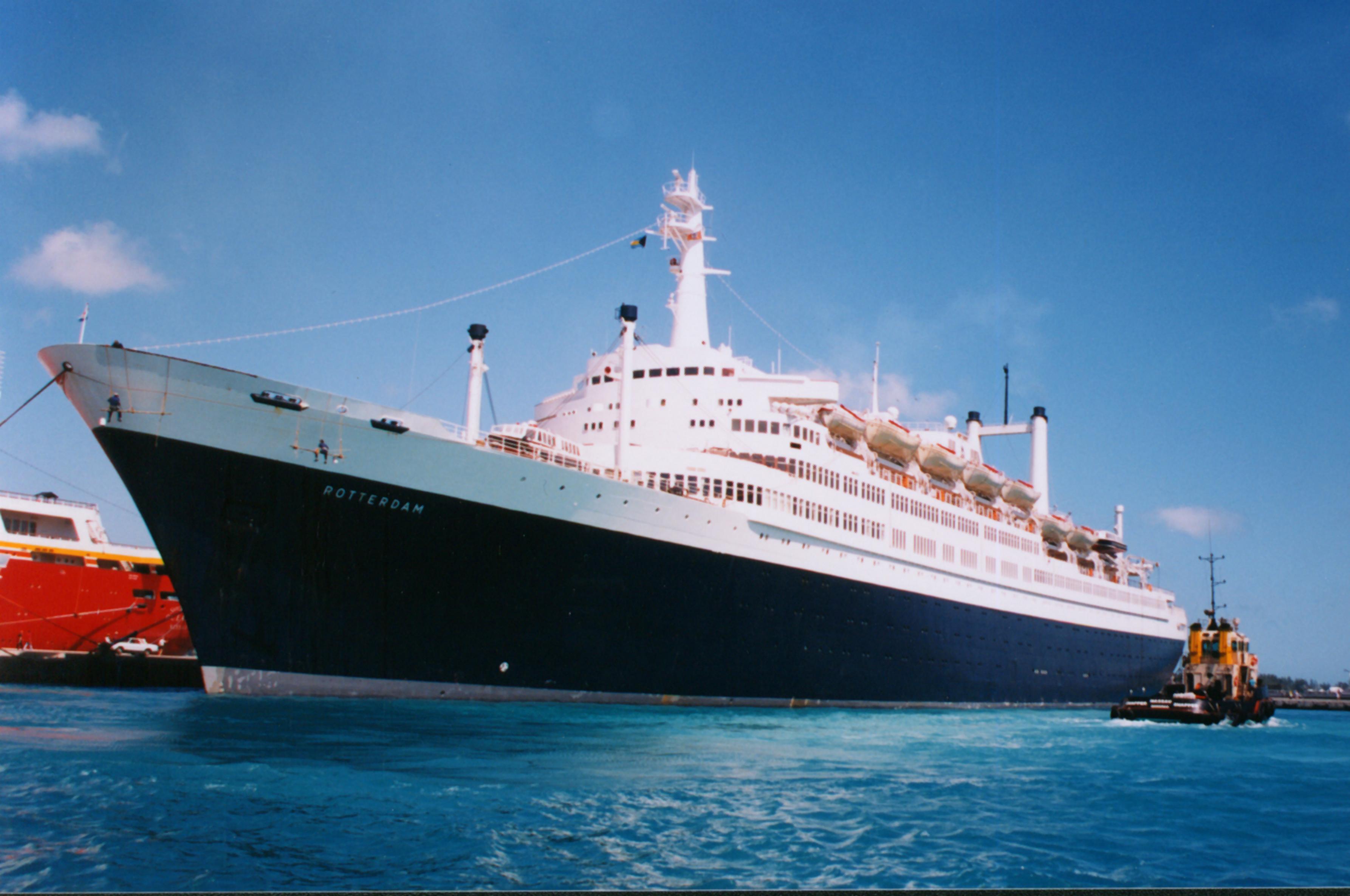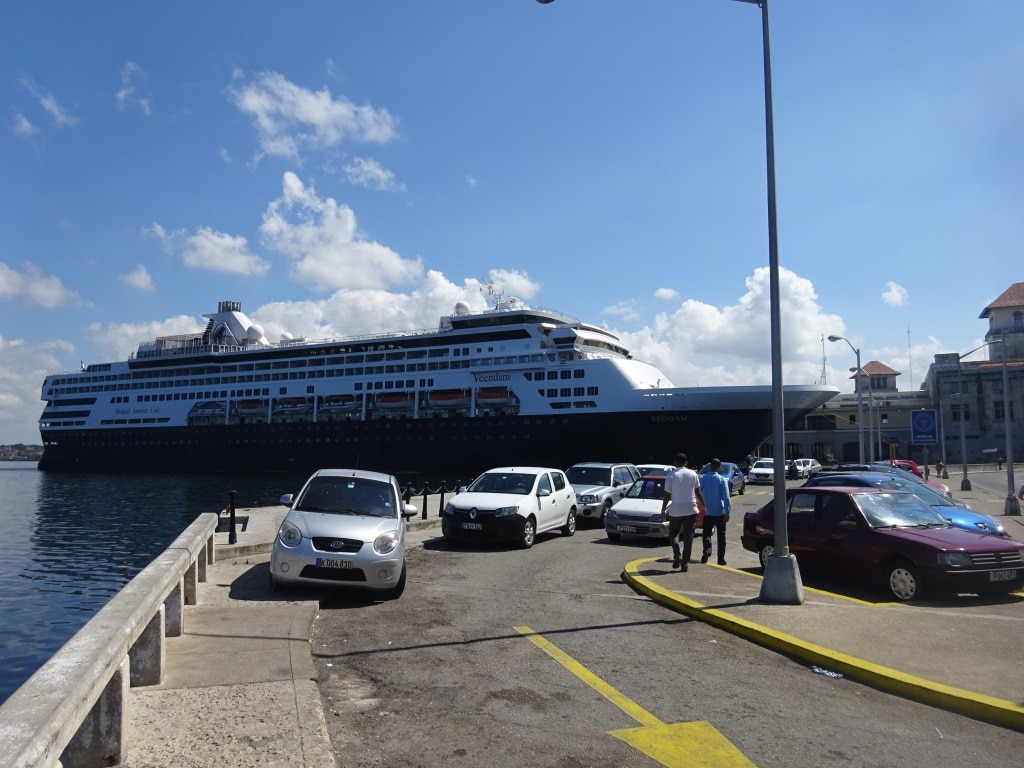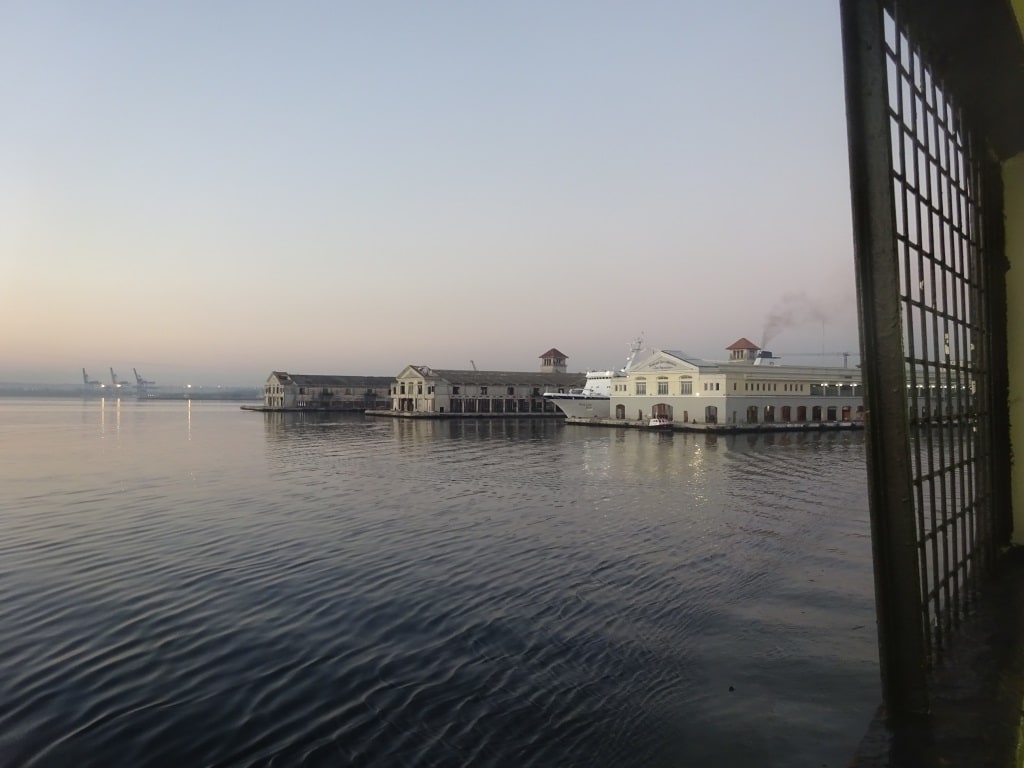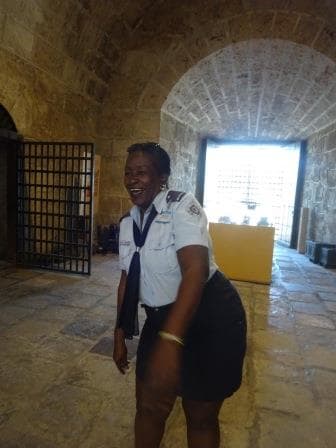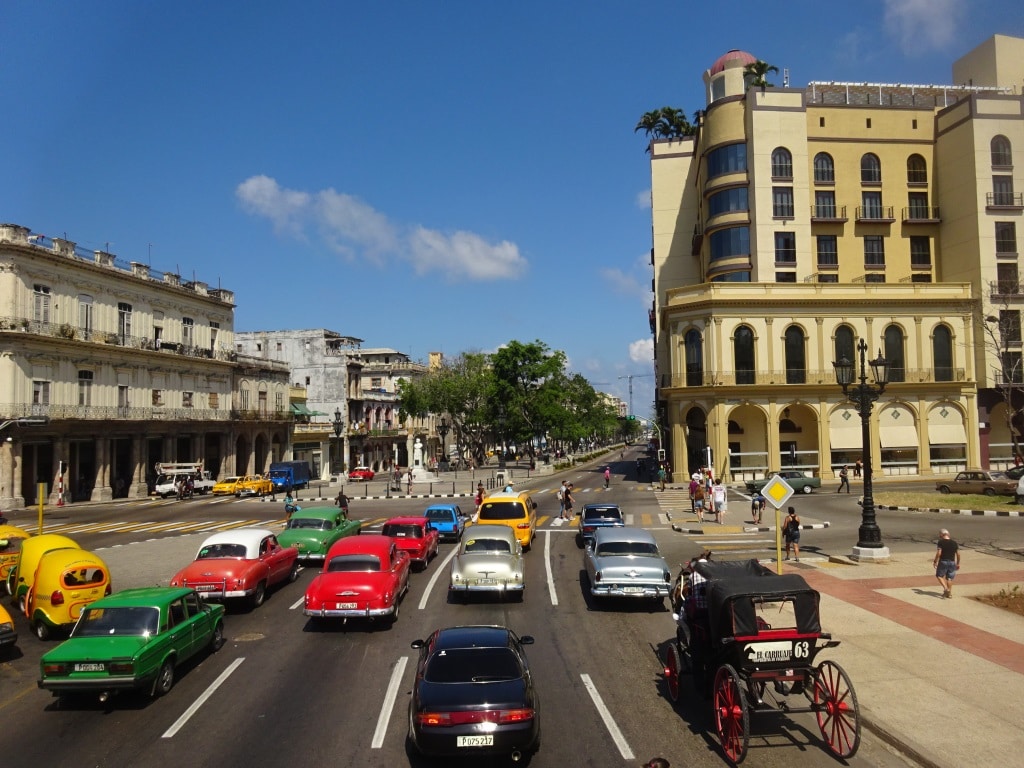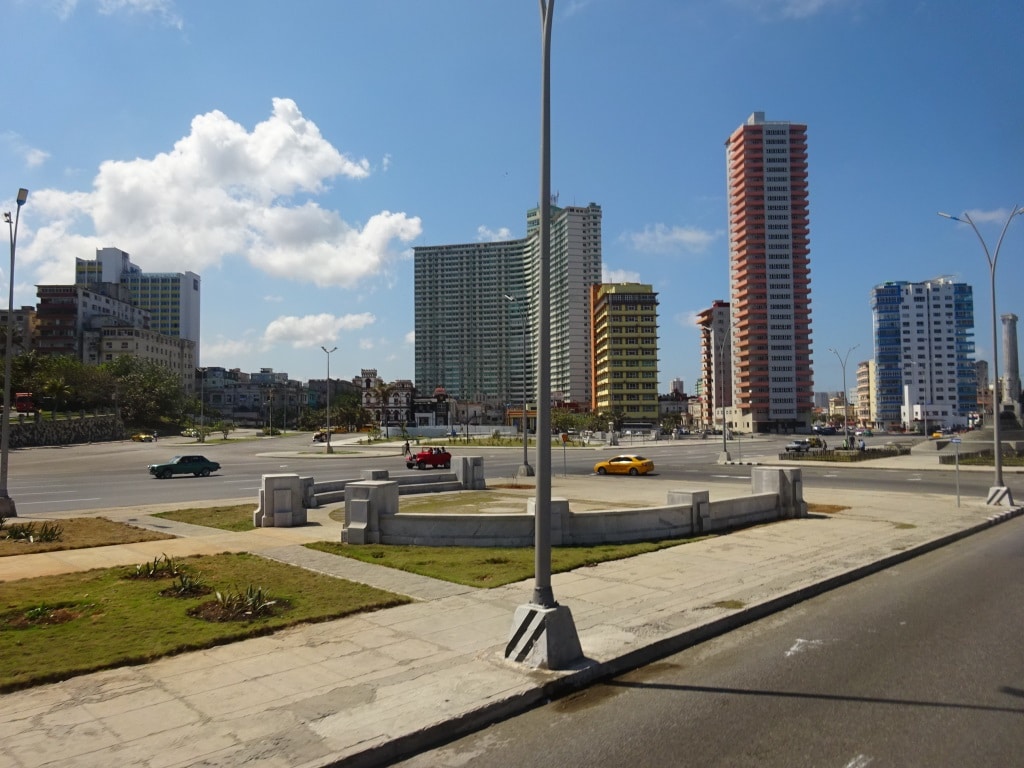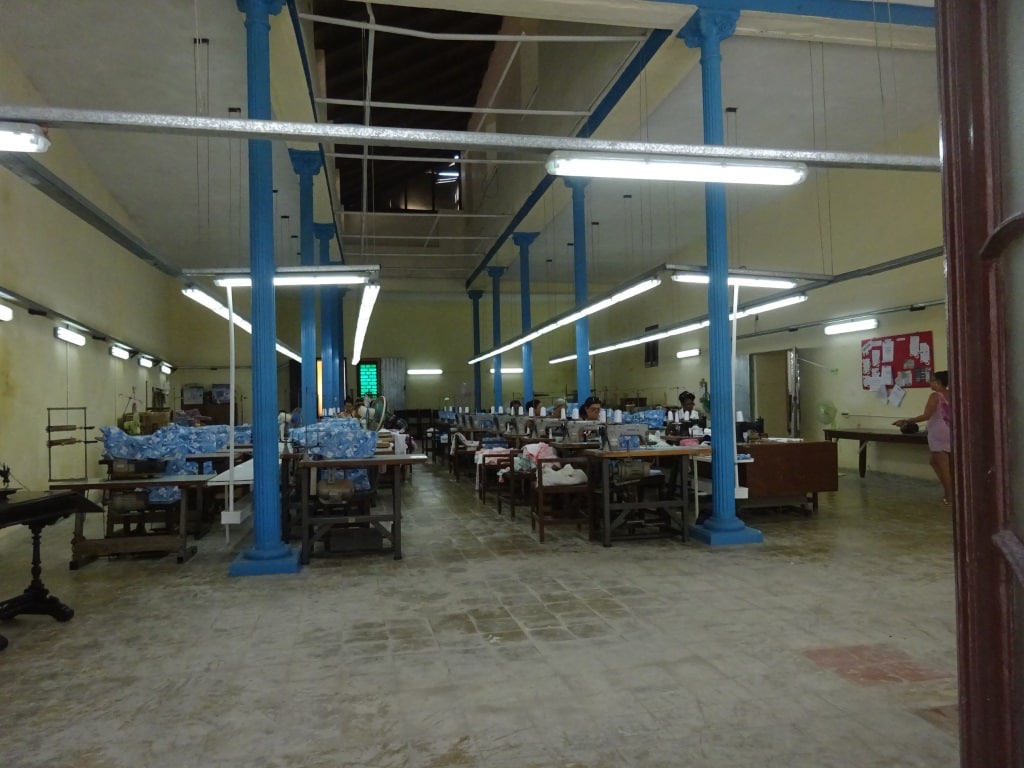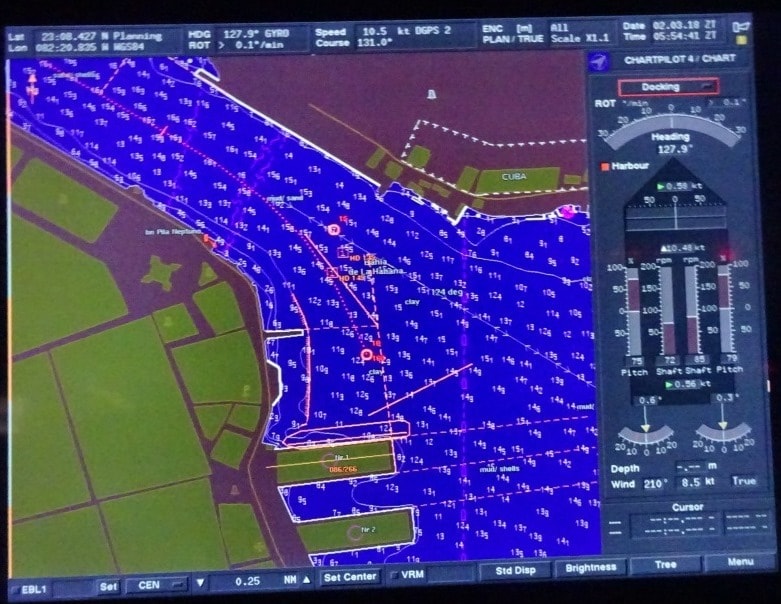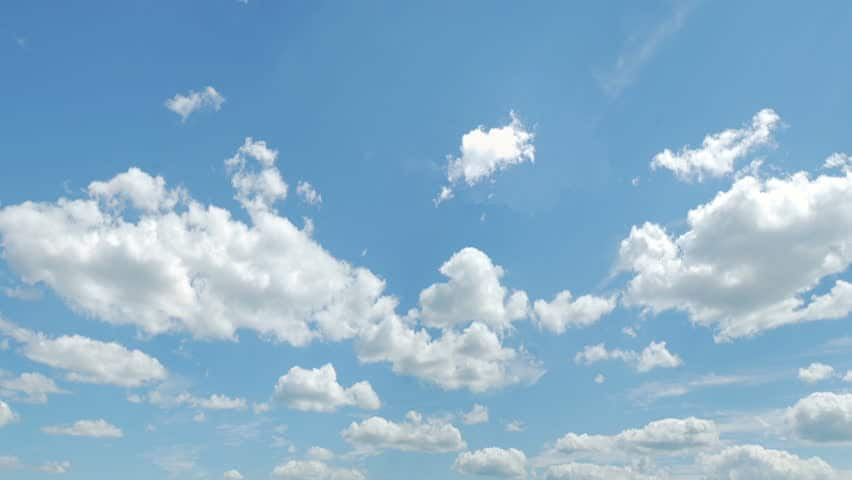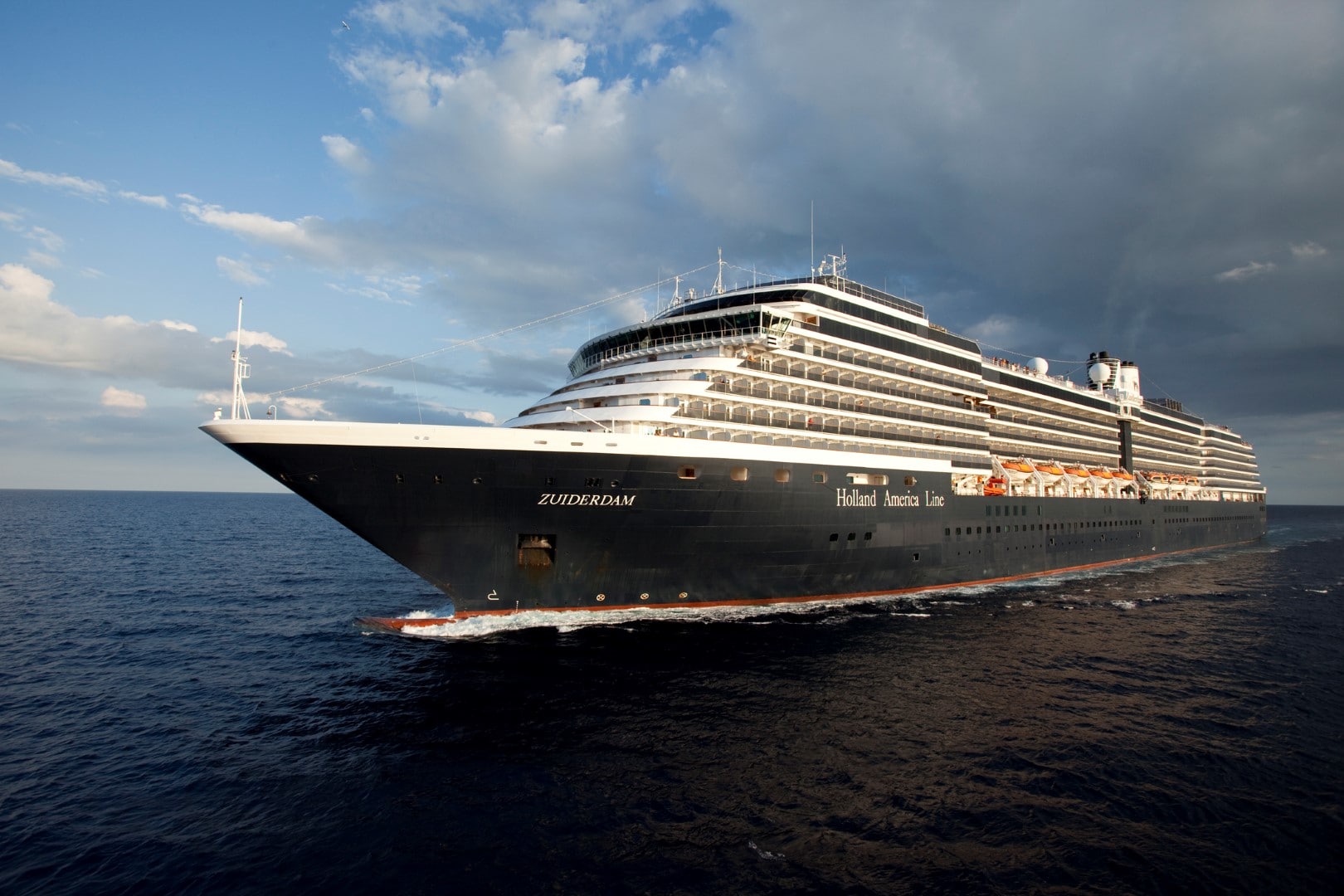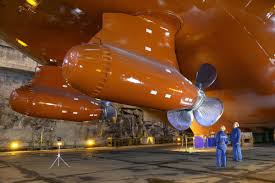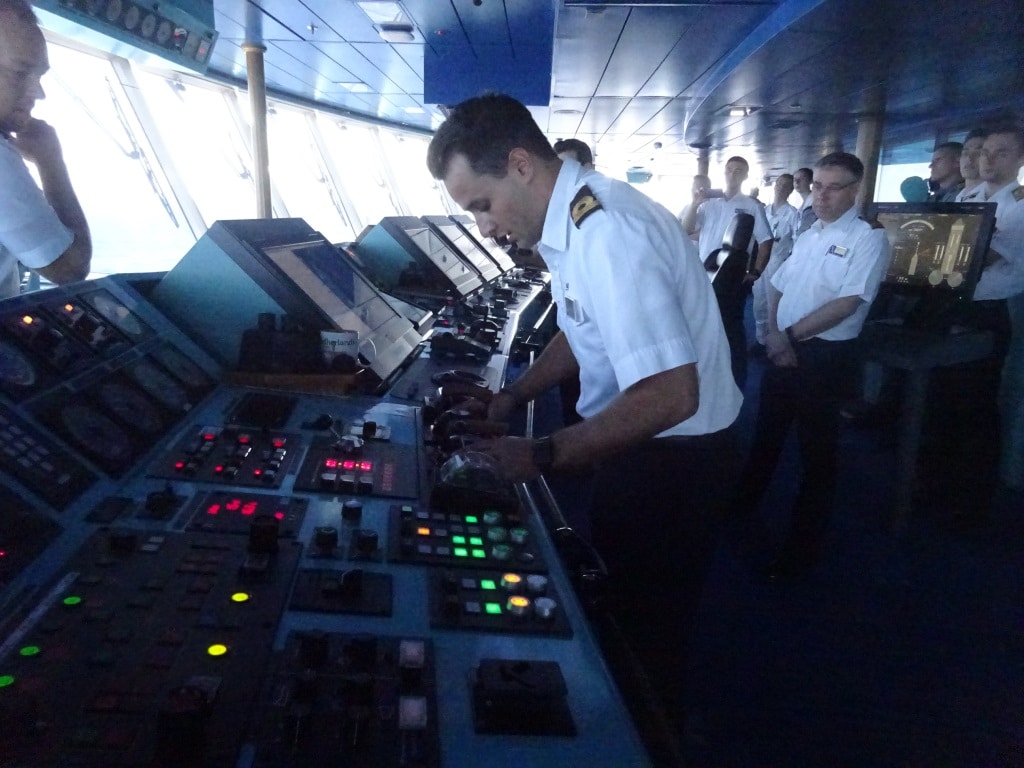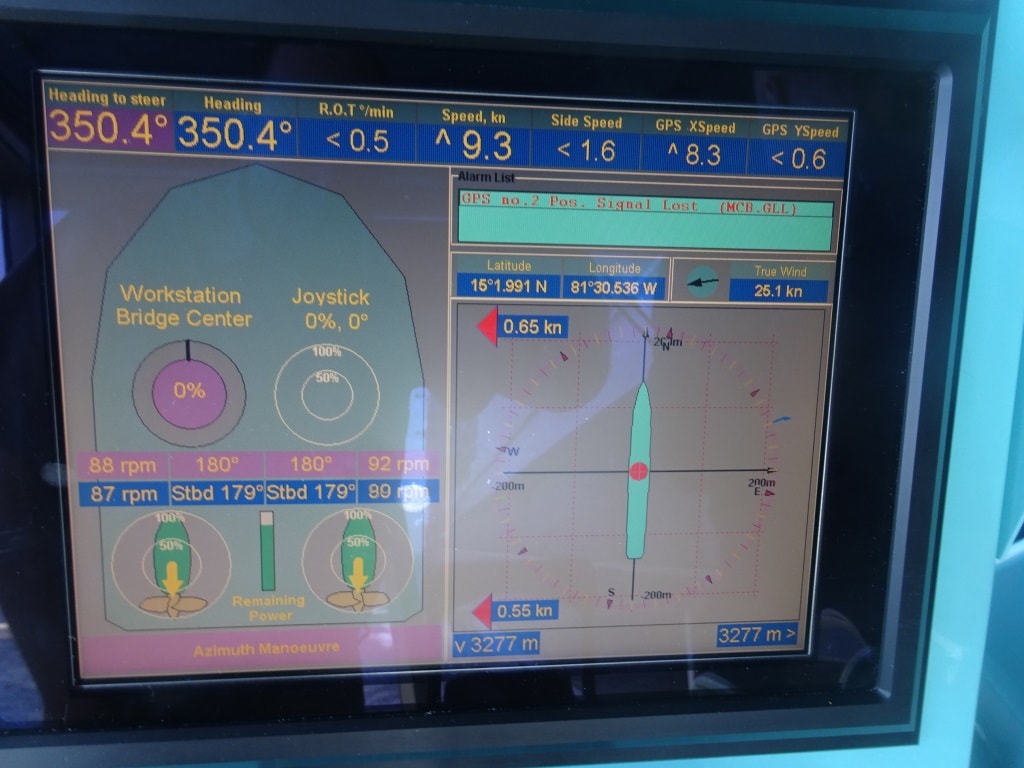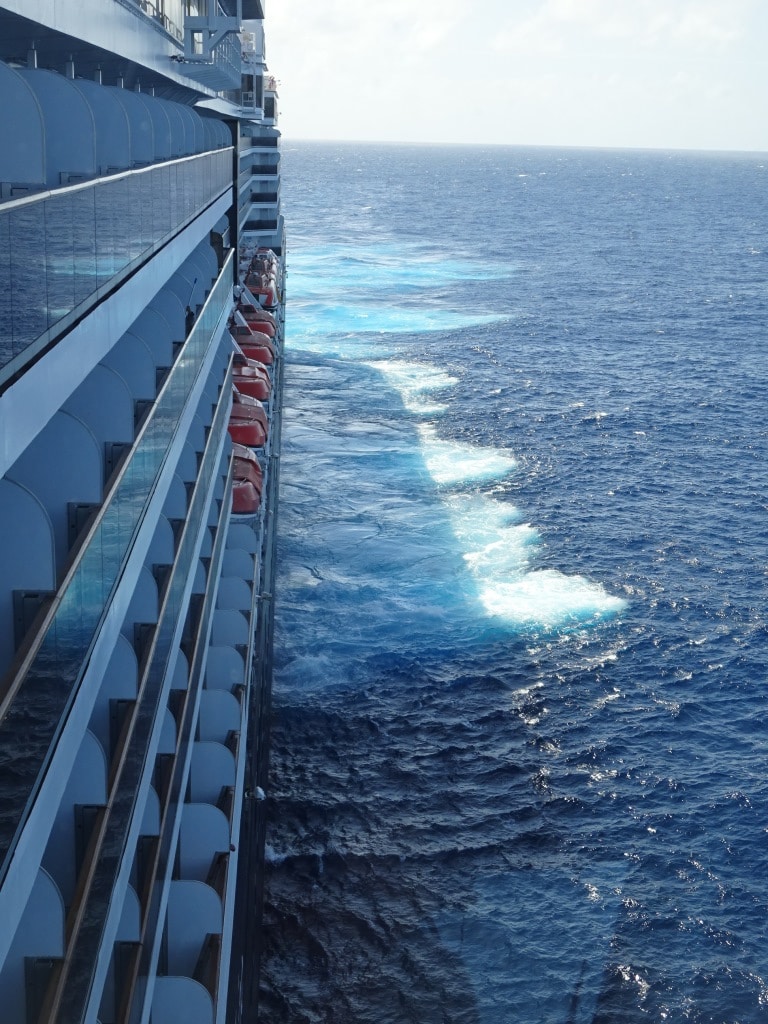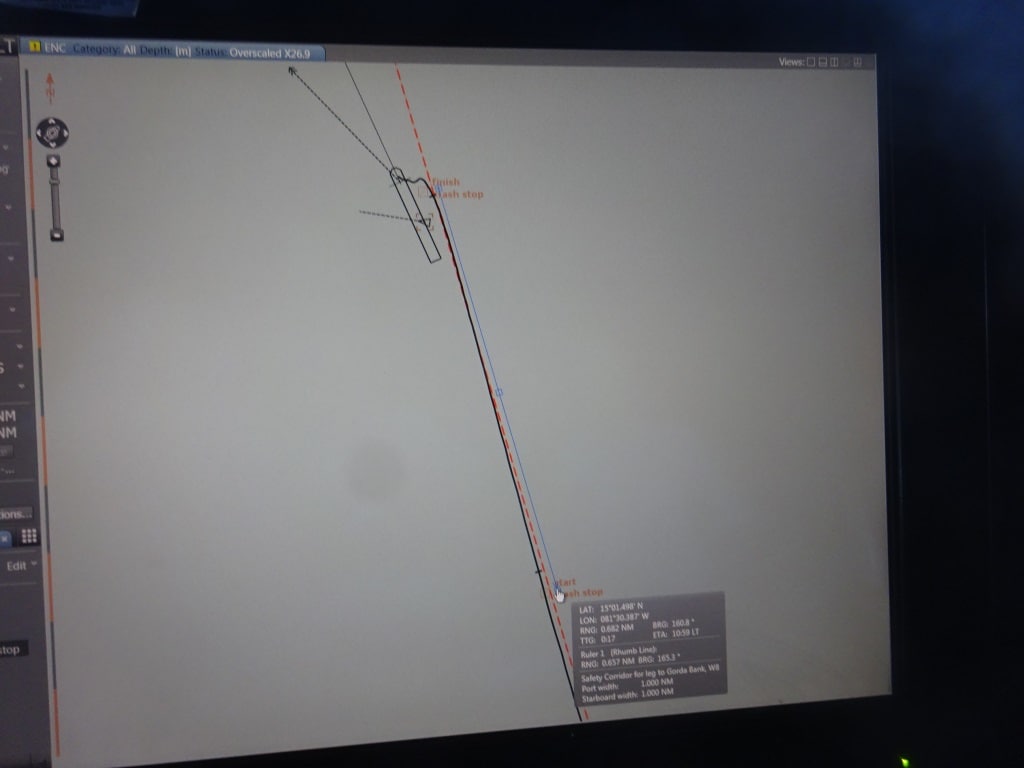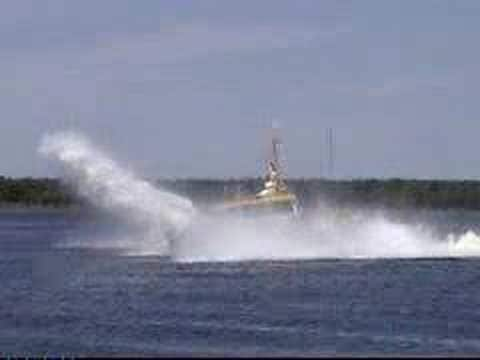The nice of thing about Castries is that it has a very nice sheltered harbor from the predominant Easterly winds. So even if the Trade Winds reach their maximum velocity, Castries is normally a safe bet for a safe docking and a good day in port. As such it was this morning when we approached at 07.00 hrs. outside there was about 20 to 25 knots of wind but inside it hovered around 15 knots. No worries about not getting in. As the wind was scheduled to reduce in velocity later in the day, the captain opted to dock nose in. That was a good idea anyway as the dock were we were going to, ends up in the rocks and that is not good for the propellers if you get to close.
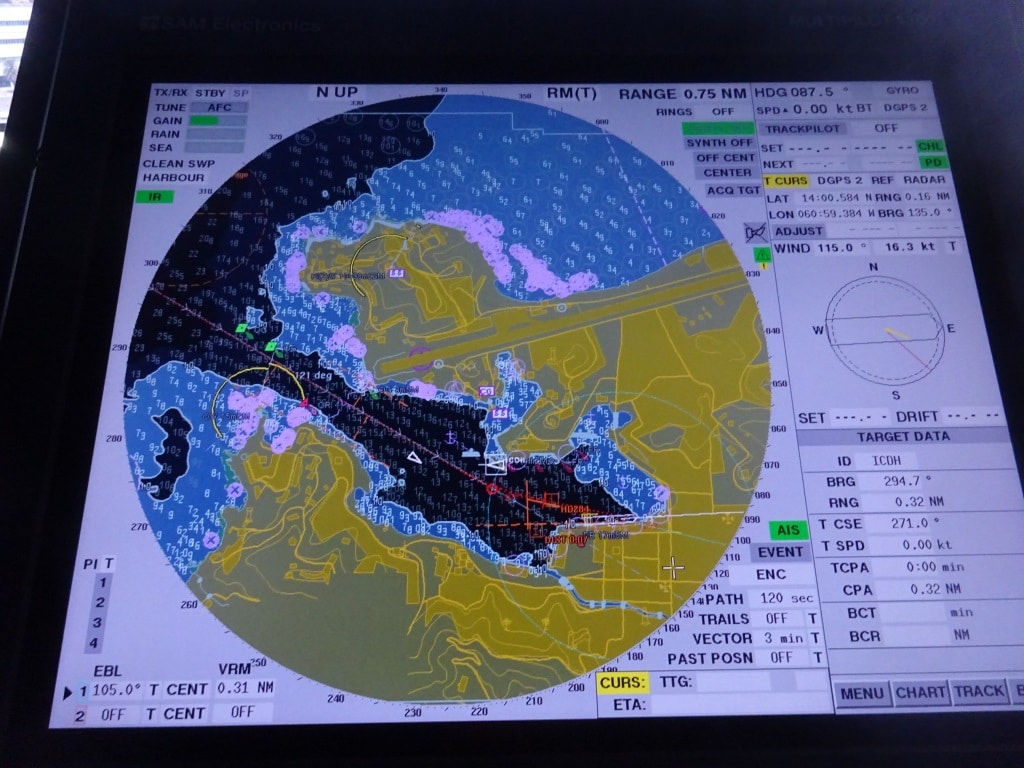
Castries harbor. As you see it is a straight line all the way in. The small white triangle is the AIS from a small ship coming in. (AIS = Automatic Identification Signal)
Today we docked at the Elizabeth Pier, or berth 3 & 4 right with the nose in the middle of Castries. There are also two dedicated cruise berths, Seraphine 1 and 2, which are the normal docks for the cruise ships, but when there is no cargo ship in port they put one cruise ship in down town. Today we were the lucky one, while the Aida Vita went to the cruise terminal, Seraphine 1. The 3rd ship the Star Dream never showed up, unless it was a very futuristic looking private yacht in black and mocha colors that docked at the general cargo pier. But I could not read the name.
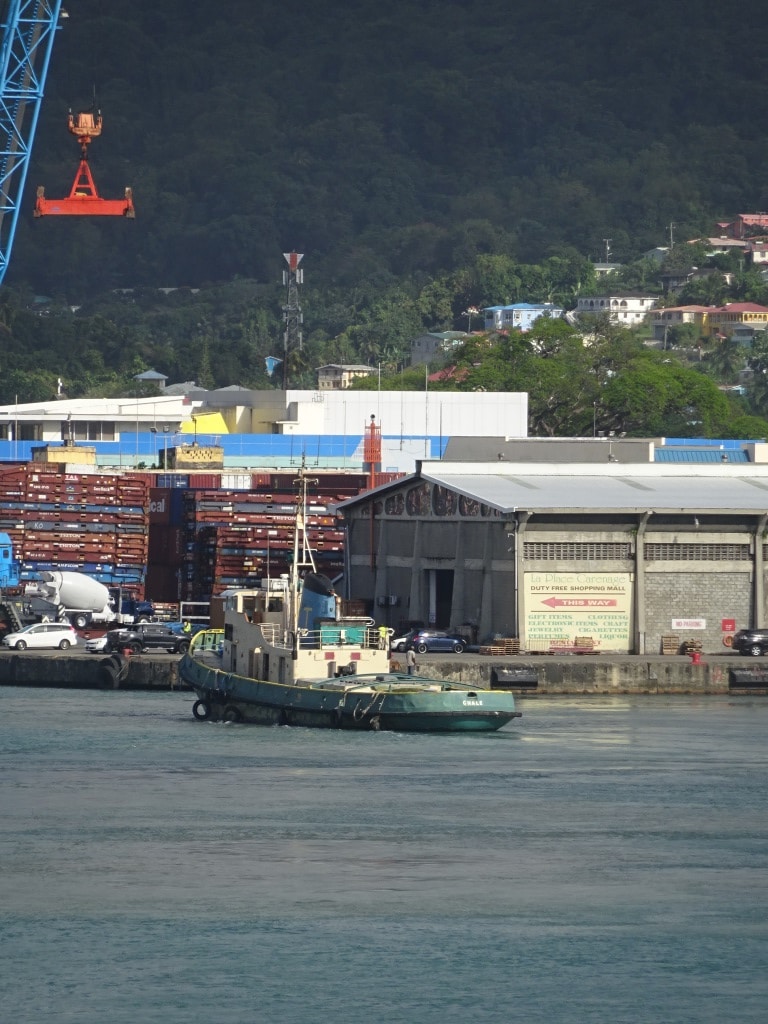
The leading lights towering over the warehouses. As you can see the beacons are not yet in line. The ship has just swung around and still has to line up for sailing out.
Sailing into Castries is fairly simple, it is a straight course until you pass the first cruise dock on the portside and then you adjust for your own way of approaching the dock. To make it easier to sail that straight course, there is a leading light system set up on the downtown dock and if you keep both lights or both day marks in line, then you are perfectly in the middle of the channel. The only thing we are concerned about here is the airport. It lies in a hidden corner behind a rock when coming in, and when going out. You can only see the landing strip once you start passing it. Why is it a concern, because we cannot see if a plane is arriving or departing. Can it cause a problem, yes, as time is flexible in St. Lucia. The pilot on the ship always confers with the control tower to find out if there is air traffic expected and most of the time the answer is correct. But not always. Either the Control tower does not care about the ships or the approach times given are not correct. Time is flexible, also in the air.
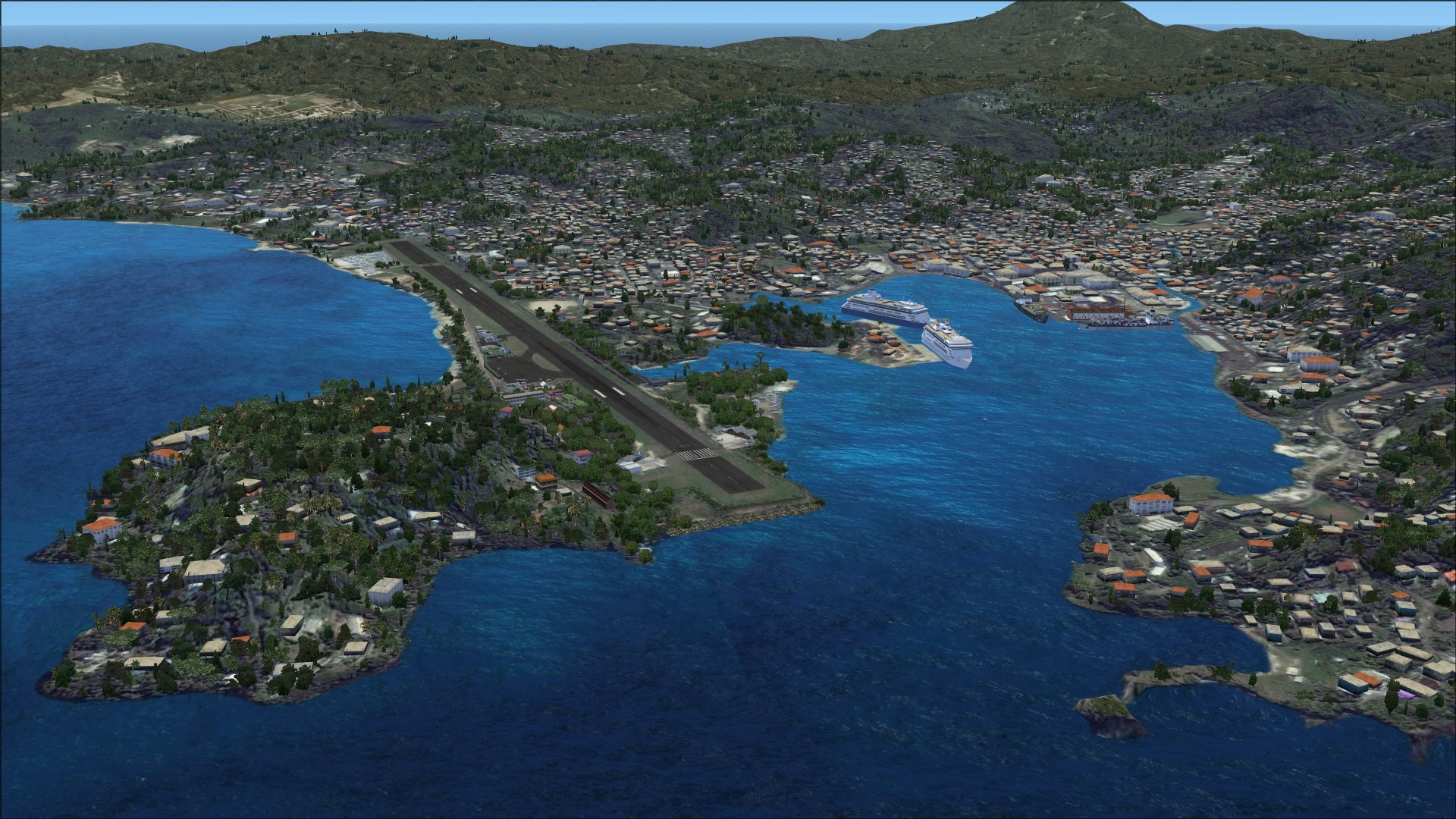
Overview of the port with the airport prominently visible. The rocks with the trees on it on either side are just high enough to obscure any plane approaching or leaving.
Most cruise ships captains eventually have the experience that an aircraft comes buzzing by, while the all clear was given with an ETA, well before or well passed our passing time. Most of the aircraft here are of smaller size as St. Lucia has a bigger airport to the South. Is this a concern? If we could be sure that they would fly in at a good height, than it would not be. But on occasion we have a sky-jock who wants to put their wheels down on the first inch of tarmac when he or she gets there and that means their fly path in the descent is at our bridge level. Although a steel ship will always win it from an aluminum tin can, the idea of a collision is not appealing. I had this experience once when a local 16 or 32 seater plane came in and went for the early touch down. It passed about 100 meters in front of our bow. I was outbound and then 100 meters is not much as you are in the process of speeding up from maneuvering speed to about 10 knots. I do not know how the pilot in the plane reacted when he saw 60,000 tons of momentum coming at him but I was not a happy camper. Explanation from the Control Tower was that this plane was supposed to come in 10 minutes later but arrived early. (Maybe the pilot found a short cut somewhere and wanted to be in before cocktail time)
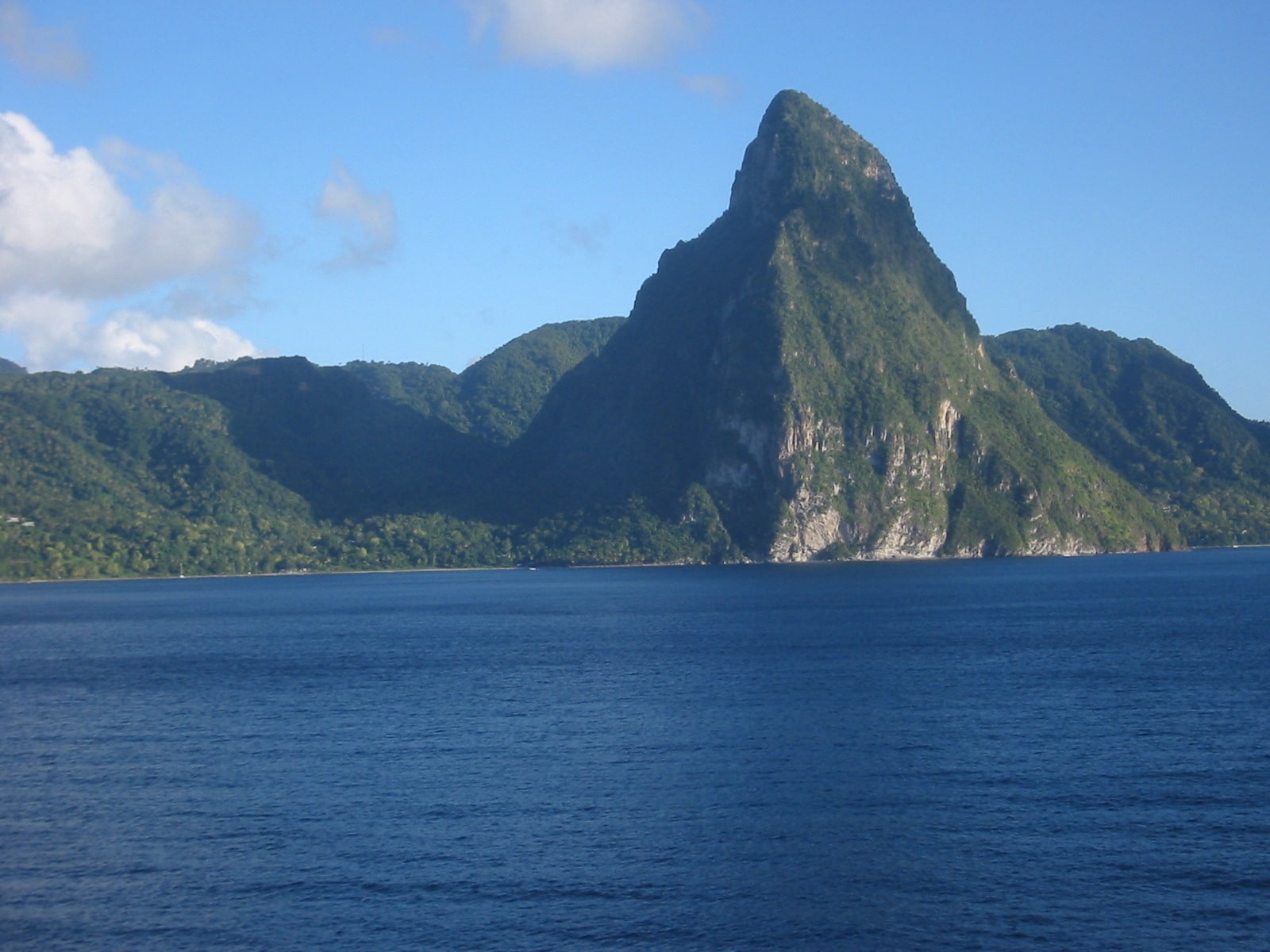
The Pitons, as seen in 2014 from my own ship the Statendam. With volcanoes things do not change much in 4 years, so it all still looks the same.
We sailed at 15.00 hrs. which is on the early side but we also had sightseeing on the program. 15 miles to the south are the Pitons (= which means spike) at the south side of St. Lucia. These are over 700 meter high volcano cones. The outside of the volcano crater has eroded away, being lighter lava and the inside of being of much harder material has remained and is now a free standing pinnacle mountain. This is a UNSCO world heritage site due to its outstanding beauty. So we are going to have a look.
From there we put the pedal to the metal to get to St. Johns Antigua on time, where we are supposed to dock at 08.00 hrs. at one of the down town piers. It is going to be a full house if all the ships are showing up that are scheduled, with the Azure of P&O, the Adventure of the Seas of RCI and the Seabourn Odyssey, of our daughter company Seabourn. Everybody is coming in at the same time, so it will be an ocean liner parade.
